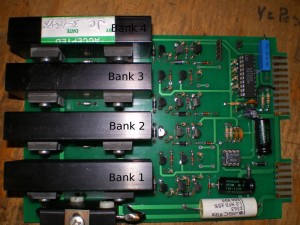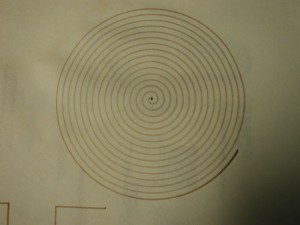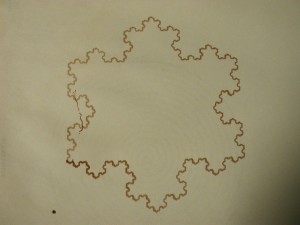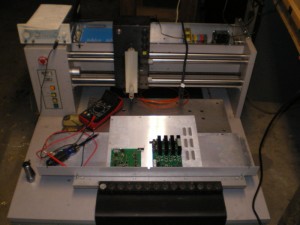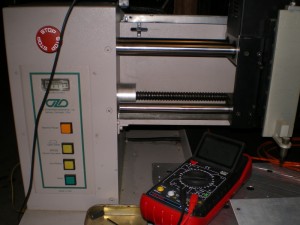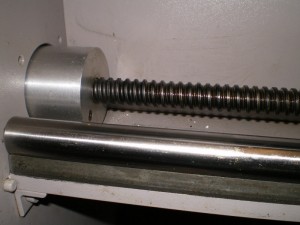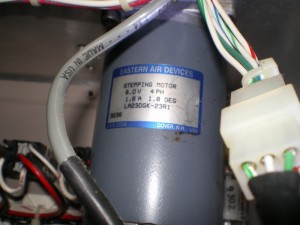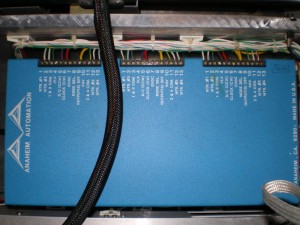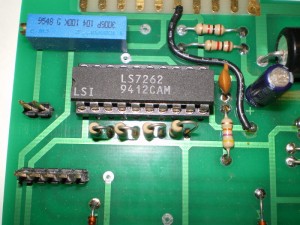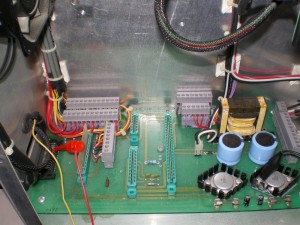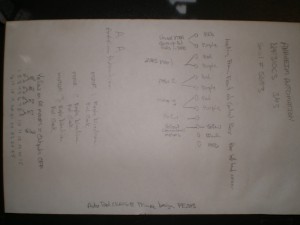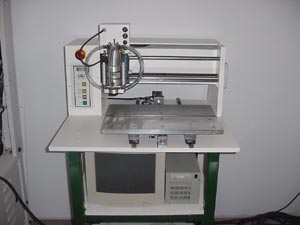This OZO has a spindle motor, with a proprietery controller card. This evening I took the first stab at trying to reverse engineer this circuit card. From my research so far, I think that it may be possible. There are 8 output devices all appear to be the same 32N20E, these are 32Amp 200Volt Power FETS, WOW!
There is an LS7262 brushless motor controller chip and a 555 timer which may provide the oscillator input for the servo controller chip.
This is a picture of the Board with the IO pins labled:
Pin out:
The bottom right 5 card edge connectors seem to be associated with the output drive to the motor.
1A Power for the motor (Probably High Voltage like 30 Volts)
2A Fat Trace to FET Bank 4
3A Fat Trace to FET Bank 3
4A Fat Trace to FET Bank 2
5A Fat Trace to FET Bank 1
6A Ground (Also connects to 1B)
The upper card edge connector appears to be IO for the LS7262 Chip
1B Ground (Also connects to 6A)
2B Connects to S1 on LS7262 (PIN 15)
3B Connects to S2 on LS7262 (PIN 16)
4B VSS which is actually V+ for the LS7262 (PIN 11)
5B Brake of the LS7262 (PIN 9)
6B -V of the LS7262 (PIN 18) Also connects to the CS1 and CS2 and Ground
7B VTRIP of LS7262 (PIN 13)
8B FWD/REV of LS7262 (PIN 19)
9B ENABLE of LS7262 (PIN 10)
10B V+ also goes through Pot to open jumper pin to CS1
It will take some more reading of the data sheet to figure out what signals EMC needs to send to control the servo. It seems like it revolves around the Vtrip pin as far as speed control. That pin seems to go to one of the IO pins on the other proprietery card. It will take some more time to begin to understand that card. I thought that it was mainly centered around the encoders and limit switches, now I am beginning to question that assumption.
Its nice to think there may at least be hope of getting the existing orginal spindle going again. We shall see…
